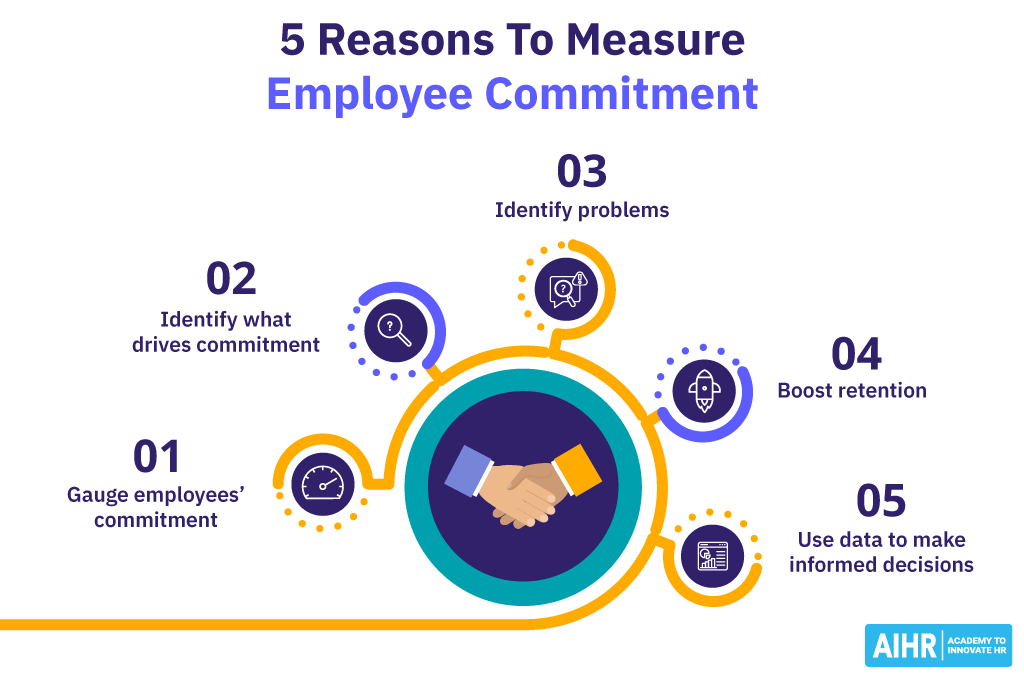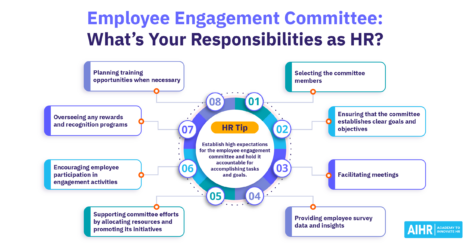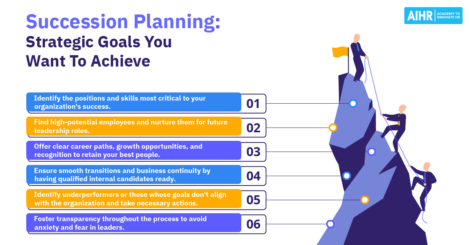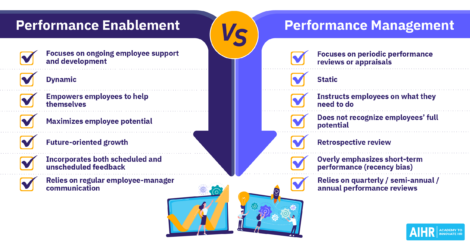Your Ultimate Employee Commitment Survey Guide [Plus Example Questions]

What is an employee commitment survey, and how can it help you build a more committed workforce that is loyal to your organization?
Have you ever wondered how committed your employees are and what makes an employee commit to their job for the foreseeable future? Employee commitment is not the same as employee engagement, and genuinely committed employees tend to be rare. In an ever-changing work landscape where the war for talent is magnified, keeping top performers committed, motivated, and engaged at work is crucial to the company’s success.
A study found that when employees are asked whether they see themselves remaining with a company in two years’ time, they will be honest about their intentions. This can give your organization valuable insight into retention, which is just one of the reasons why you should regularly conduct employee commitment surveys.
In this guide, we’ll explore what employee commitment is, how to measure it, the types of employee commitment, examples of questions to ask about commitment, and how to conduct an employee commitment survey in your organization.
Contents
What is an employee commitment?
Types of employee commitment in the workplace
Employee commitment survey questions examples
How to conduct an employee commitment survey
What is an employee commitment?
Employee commitment refers to how attached, dedicated, and invested an employee is in their job and the wider values, mission, goals, and success of the company.
Committed employees are loyal, hard workers who remain engaged and motivated during difficult times and are willing to go above and beyond the requirements of their role. They will be more enthusiastic, optimistic, and proactive at work and are more likely to remain with their organization for the long haul, which contributes to lower turnover and stronger team morale.
How do you measure employee commitment?
Employee commitment can be measured using a range of methods and tools, including:
- Employee surveys (a pulse survey or organizational commitment questionnaire)
- Retention rates
- Performance metrics (productivity, quality of work, contribution, learning and development participation, and attendance)
- Employee net promoter score (eNPS)
- Benchmarking with competitors.
Why measure employee commitment?
There are several key reasons why organizations should measure employee commitment. Here are the main objectives of conducting an employee commitment survey:
- Gauge employees’ commitment: By measuring commitment, you can see how invested each employee is in their job and company, which gives you a clearer idea of who is committed and who’s not. This can help with succession planning.
- Identify what drives commitment: Which aspects of your company values, operations, and work environment have a positive impact on commitment, and which ones have a negative impact? An employee commitment survey helps you identify what drives commitment, satisfaction, and motivation in your company.
- Identify problems: You can uncover specific areas where many employees are unhappy or disengaged, as well as early signs of disengagement or declining commitment in individuals. Then, HR and leadership can take action to address these issues as early as possible to prevent them from escalating.
- Boost retention: Commitment and retention are linked. Employee commitment surveys can help you understand what drives commitment in your organization, which allows you to improve retention rates and reduce turnover. This will lead to cost savings, improved team morale, and help you to meet organizational goals.
- Use data to make informed decisions: An employee commitment survey offers insightful data with which organizations can make evidence-based decisions when it comes to deciding on areas for improvement, prioritizing, and allocating resources.

Employee commitment survey vs. employee engagement survey
Here are some of the notable differences between employee commitment and engagement.
Employee commitment survey Employee engagement survey Refers to the degree of loyalty and dedication an employee has towards their organization. A broader concept that encompasses the emotional and psychological connection an employee has with their work, colleagues, and the organization as a whole. How satisfied an employee is in their organization. Impacts the mindset of others in the organization. How attached an employee is to the values and goals of the organization. Can be measured in terms of employee performance. Committed employees are often adaptable, flexible, and demonstrate initiative. Involved in the operations of the company as well as enthusiastic about their work. Committed employees are committed not just to their responsibilities but also to improving the organization as a whole. Engagement does not necessarily predict performance. According to The Wall Street Journal, “in 42% of organizations, low performers are more engaged than high and middle performers.” Committed employees consistently produce high-quality work and aim always to achieve the best outcome. Engaged employees do not necessarily produce high-quality work.
How employee commitment affects business performance
Here are some of the main ways that employee commitment impacts the organization:
Positive impact
- Higher retention rates: Employee commitment is often one of the key factors linked to lower turnover. Committed employees understand how their roles contribute to the success of the company, which makes them dedicated to it today and in the future. They may also see opportunities for professional development and career growth, which can encourage them to focus on advancing in the company rather than contemplating leaving. Once you know what drives commitment and work to improve it, you will be in a stronger position to retain your top performers, boost retention, build a stable and experienced workforce, and reduce recruitment costs.
- Improved organizational culture: Employee commitment surveys help businesses determine which aspects of their culture need improving and enable them to create a more positive and inclusive workplace culture for all that leads to better morale, productivity, and loyalty. A survey by McKinsey found that employees who feel very included in their organization are almost three times more likely to feel excited and committed to their employer, which demonstrates this is a virtuous circle. In turn, committed employees help to build a healthier culture through their positive outlook.
- Contributes to organizational growth: Taking employee commitment seriously, acting on the findings in your surveys, and prioritizing your employees will help you attract top talent, retain your high performers, increase efficiency and profits, and help you meet your business objectives, giving you a strong competitive advantage.
- Increased productivity: Committed employees better understand the organization’s long-term vision and goals and their role in achieving those goals. Employees with this understanding are likely to perform better and exceed expectations.
- Strengthens your employer brand: Employees who are genuinely dedicated to their employer’s values, mission, and goals become strong brand ambassadors who can convey a positive image of your brand to other employees, customers, candidates, and the wider public.
- Improved collaboration: When employees are committed to the company, they showcase their responsibility by working effectively within a team and motivating others to complete their tasks to the highest standard. Not only does this lead to better collaboration and teamwork, but it can also boost productivity.
Negative impact
- Lower retention rates: Without committed employees, your workforce will not understand the part they play in the success of the business which makes them less dedicated to it and at risk of leaving at any point should a new opportunity arise.
- Toxic culture: Without sending out an organizational commitment questionnaire to your employees to complete, you may not uncover areas of your culture that need adjusting or improving which can perpetuate a toxic work environment where employees feel isolated and unwelcome. This can also inhibit teamwork, collaboration, and innovation.
- Stunted business growth: If your employees are not committed and don’t feel prioritized or valued, it can lead to lower morale and productivity, as well as your best workers leaving for a competitor, all of which negatively impact the business’s growth.
- Lower productivity: Commitment affects your employee’s ability to understand the vision and goals of the business and the role they play. Without commitment, workers are likely to have a lower output and performance and may struggle to meet expectations.
- Damages your employer brand: If your employees are not dedicated to the vision and goals of your company, they will not become ambassadors for your brand and potentially convey a negative image of your brand to other employees and their personal network.
3 types of employee commitment in the workplace
As proposed by Allen & Meyer in the 1990s, there are three different types of employee commitment in the workplace. Understanding the difference between these types helps you to tailor your commitment strategies to different groups of employees. Let’s explore these in more detail.
1. Affective commitment
Affective commitment is about how much an employee likes the organization they work for and how emotionally invested they are in it. This type of employee commitment has a significant effect on performance, both at employee and organizational level.
Employees with high levels of affective commitment will be strong ambassadors for your brand and strive to bring others into the talent pool. Their individual values are also likely to correlate with the values of the organization.
2. Continuance commitment
Continuance commitment refers to the perception an employee has of the cost of leaving an organization versus finding a new job, and what they would potentially lose as a result.
In comparison to affective commitment, these employees lack a deep emotional connection with their organization and tend to stay for practical reasons. The more positive and supportive they find their employer and workplace to be, the higher the level of continuance commitment.
3. Normative commitment
Employees with normative commitment feel obligated to stay with their organization and believe it’s the “right” thing to do. For example, because their employer has invested in their development, or the company is going through a challenging time, or their team relies on them.
The heart of normative commitment is about the moral duty and values an employee possesses. If an organization prioritizes the wellbeing of its employees and rewards them well, normative commitment tends to be higher.
Employee commitment survey questions examples
Here are some examples of employee survey questions that can help you gauge commitment levels at your organization. We’ve grouped these questions by the type of answer or rating score used for each one.
Question 1 2 3 4 5 1. On a scale of 1 to 5, how committed are you to your job? ⭘ ⭘ ⭘ ⭘ ⭘ 2. On a scale of 1 to 5, how likely are you to recommend this organization to your personal network as a great place to work? ⭘ ⭘ ⭘ ⭘ ⭘ 3. On a scale of 1 to 5, how supported do you feel by your manager/supervisor day to day at work? ⭘ ⭘ ⭘ ⭘ ⭘ 4. On a scale of 1 to 5, how well do you think the company recognizes and rewards employee’s hard work and contributions? ⭘ ⭘ ⭘ ⭘ ⭘ 5. On a scale of 1 to 5, how strong is your understanding of the long-term goals and vision of the business? ⭘ ⭘ ⭘ ⭘ ⭘ 6. On a scale of 1 to 5, how diverse and inclusive do you perceive our company to be? ⭘ ⭘ ⭘ ⭘ ⭘ Question Strongly disagree Disagree Neutral Agree Strongly Agree 1. Are you committed to your job? ⭘ ⭘ ⭘ ⭘ ⭘ 2. How much do you agree with this statement: “I feel an emotional connection to the company’s values and mission.” ⭘ ⭘ ⭘ ⭘ ⭘ 3. Would you say you’re satisfied with your current role and responsibilities? ⭘ ⭘ ⭘ ⭘ ⭘ 4. Do you think your skills and talents are being fully utilized in your current role? ⭘ ⭘ ⭘ ⭘ ⭘ 5. Does our workplace culture align with your personal values and beliefs? ⭘ ⭘ ⭘ ⭘ ⭘ 6. How much do you agree with this statement: “I am happy with the benefits and perks offered by the company.” ⭘ ⭘ ⭘ ⭘ ⭘ Question Never Rarely Sometimes Often All the time How often do you think about leaving this company and taking a new job? ⭘ ⭘ ⭘ ⭘ ⭘ Are your opinions and ideas valued by your manager and colleagues? ⭘ ⭘ ⭘ ⭘ ⭘ Do you think that your professional growth and development is actively supported by the organization? ⭘ ⭘ ⭘ ⭘ ⭘ How often do you receive feedback on your performance from your manager? ⭘ ⭘ ⭘ ⭘ ⭘ Open-ended question Response Is there anything else you’d like to share regarding your commitment to the company? How do you think the company can make a greater commitment to inclusivity and diversity? Do you have any suggestions for how we can improve the commitment of employees at our organization?
How to conduct an employee commitment survey
Here are some helpful steps for HR professionals on how to conduct an effective employee commitment survey in the workplace.
1. Define your purpose
The first step is to decide on your goal or purpose for the survey. What are you trying to find out? For example, do you believe your organization may suffer from a toxic or non-inclusive workplace culture, and do you want to gather more evidence on whether this is true?
Do you believe you lack committed employees and want to determine the percentage of truly committed employees you have? Once you know your purpose, you can then create a plan and choose an appropriate method for your survey that asks the right questions.
Depending on the size of your organization, you may have different purposes for different departments or groups of employees (for example, managers) and alter your survey accordingly.
2. Create your survey
Surveys (also known as questionnaires) are a great way to collect anonymous feedback from employees, allowing greater scope for your workforce to share how they really feel without fear of repercussions. The questions in a survey typically range from open-ended questions to questions with a rating scale (i.e. from 1 to 5), which you can see in our examples above.
Your survey may focus on one particular area of interest or a broad range of topics like overall job satisfaction, employee wellbeing, compensation and benefits, learning and development, culture, and more. What’s important is that your survey is defined by your purpose for conducting it. It’s also important not to make it too long because this can discourage participation.
Use a specific software to create and deliver your employee commitment survey, or create something simpler using a Word document or a Google form. We recommend sending out an annual employee commitment survey so that you can track trends and measure the impact of any improvements made.
An employee commitment survey is great for helping to detect a change or continuation in commitment levels. However, a survey is no substitute for in-person discussions with employees. Therefore, it’s recommended that you combine your commitment survey with interviews. Pre-plan the questions you will ask and encourage employees to speak openly and honestly.
3. Encourage employees to participate
All surveys are voluntary, and your employees must be made aware of this. However, there are ways to boost participation, which will make your survey more effective.
Consider explaining the purpose of your survey, what you hope to gain, and how the feedback will help to make improvements in the organization that are positive for everyone. Make it clear that all responses will be collected anonymously and confidentially and stored and used ethically. You could also consider incentivizing participation, for example, offering a small reward for those who complete it.
4. Analyze employee commitment survey results
If you ask the right questions, the data you collect from your employee commitment survey will provide valuable insights into your employees and the workplace. You’ll be able to learn more about how satisfied employees are with their roles, how effective your leaders are, and how loyal your employees are to your organization.
- Quantitative data: Questions with a rating scale will provide you with quantitative data that allows for statistical analysis and trend spotting. Data such as employee engagement scores, job satisfaction ratings, and alignment with the company’s vision act as benchmarks, which can help you make key decisions across the business.
- Qualitative data: Open-ended questions (as well as interview feedback) provide you with qualitative data that is richer than your quantitative findings. This data can add context that gives you a clearer understanding of how committed your employees are and why.
HR tip: Don’t forget to track KPIs
Metrics like absences, turnover, training course completion rates, and employee performance and productivity are all important indicators that can help you evaluate employee commitment in your organization. Don’t forget to track these and combine them with direct feedback from your employees.
Continually analyzing all of this data helps you spot red flags, determine patterns and trends, and see what you’re doing well and where you need to improve.
5. Benchmark your results
Comparing the results of your employee commitment survey with industry averages can provide you with valuable context and help you see how you compare to industry standards and competitors. This knowledge will provide you with reassurance and confidence and allow you to be more strategic and focused ona your goals for improvement.
6. Discuss with stakeholders
Remember to communicate your findings with stakeholders to ensure buy-in on proposed improvements. Make sure this is done clearly and concisely and speaks to the long-term vision and goals of the business.
7. Create a plan of action
Once you’re clear on your strengths and weaknesses, you can devise a strategic plan of action to improve employee commitment. Prioritize your most important and pressing initiatives – the ones that will have the greatest impact. Outline your goals and the steps needed to achieve these, along with a rough timeline and the metrics you will use to measure your progress.
8. Communicate the results and your plan to employees
Don’t forget to share the results of your commitment survey with everyone in your organization, along with a condensed version of your findings and the action you’re taking as a business to respond and improve. A company newsletter is a simple yet effective way to do this.
This demonstrates transparency and that you value the feedback and wellbeing of your employees. Keep employees updated with your progress as you improve to the workplace and employee experience.
HR tip: Best practices for conducting an employee commitment survey:
- Define the purpose of your survey before you create it
- Create a survey with a range of rating-scale and open-ended questions to collect quantitative and qualitative data
- Conduct an employee commitment survey at least once a year
- Incentivize participation in your surveys by making it clear feedback is anonymous and offering a small reward
- Analyze a range of data while also looking at KPIs to measure commitment levels
- Pinpoint your strengths and weaknesses
- Prioritize action based on the impact it will have
- Keep employees in the loop on results as well as your progress with a company newsletter.
Key takeaway
Regularly conducting an employee commitment survey is a valuable tool to determine how committed your workforce is to the company, and what changes you need to make to increase that level of commitment and ensure dedication and loyalty to the long-term vision and goals of the business. Once you know what drives commitment in your employees, you can take steps to improve these areas, which can boost retention, productivity, profits and growth in your organization.
Weekly update
Stay up-to-date with the latest news, trends, and resources in HR
Learn more
Related articles
Are you ready for the future of HR?
Learn modern and relevant HR skills, online












